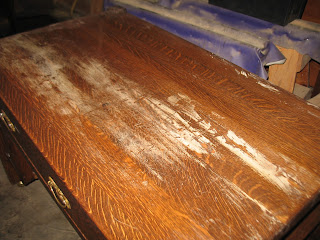Well, obviously the medium is the same - Wood. Maybe we work with different species of wood or different ages of wood, but it is still wood. They would have used Cedar, Poplar, Pine and Oak, just as we do today, but we never see items made out of species such as Almugwood which was used to make the pillars on Solomon's Temple or or Shittah which the Ark of the Covenant was made out of!
The tools used is what really makes me curious. I wonder if they were like Egyptian hand tools or more like the Roman hand tools as they were in power when Jesus was born, or possibly were they like the Greek hand tools? Or the Persian hand tools? Joseph and Jesus would have had access to axes, chisels, hand powered 'Drills', lathes, saws, planers and files but I am sure all of those were quite a bit more primitive then we have now!
Some things haven't changed very much. A chisel is still a chisel. But the drill has certainly changed a whole lot!
Nearly 4,000 years ago, the Egyptians were using hide glue for their furniture adhesive. This is proven by hairs found in Pharaoh's tombs and by stone carvings depicting the process of gluing different woods. Hide glue is still in use today for wood gluing and we probably use it nearly once a week at our shop. So that is another similarity. But we do have many other glues now which work faster and create an almost permanent bond in fact we use a two-part Epoxy nearly every day.
Our ancient Israelite woodworkers Joseph and Jesus, have the wood to use, the tools to create their piece of furniture, the glue to hold it together, what might they have used to finish it with? Here at our shop we use fancy water based stains and finishes, but I know they didn't have those in Jesus's day. I do know that Tung Oil and Linseed Oil have been used as furniture finishes for a thousand years. Perhaps they used an oiled finish? Tung Oil comes from the nuts of a Tung tree and Linseed Oil comes from pressed flax seeds. We will still use both of these types of finishes when we do restoration work of an older piece.
So many things have changed since Jesus was born and Joseph taught him his trade, but so many things have stayed the same. I love that someone so important that we still celebrate his birth hundreds of years later, began his life as a humble carpenter.


















































